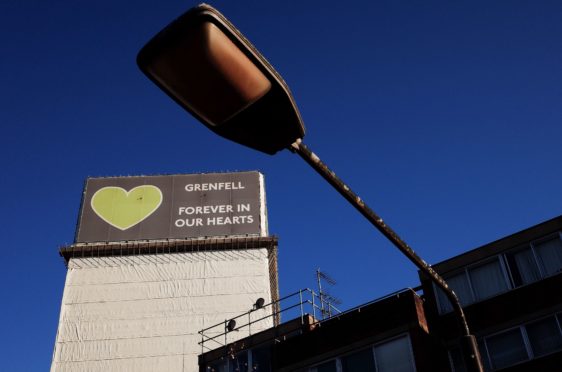Today the charred exterior of Grenfell Tower may be covered and sport a green heart but it still looms over North Kensington as a hellish monument to lighter touch regulation.
In 2017 some 72 of its residents lost their lives after flames spread up the structure through external cladding. It was a human tragedy, observed by many onlookers impotent to help.
Almost exactly a year ago, the Equality and Human Rights Commission (EHCR) concluded that the human rights of residents were breached by the local council and central government.
Their rights to life and adequate housing were contravened before the fire started, not least by allowing the use of combustible cladding.
The commission’s report, following 15 months of investigation, said “the state either knew, or ought to have known, of the real and immediate risk to life posed by the cladding on Grenfell Tower”. Regulation had failed and residents were not warned about the dangers they faced.
Last December’s edition of the New Civil Engineer magazine reported that UK ministers repealed local laws to relax fire safety regulations following vocal opposition to stringent controls by the building industry in 2012.
The changes meant that consultants and contractors were able to work to less stringent fire regulations when they refurbished the Grenfell tower in west London in 2015.
Documents obtained by New Civil Engineer under a Freedom of Information request revealed that the now defunct contractor Carillion was among those urging ministers to relax “burdensome” and costly regulations.
It is difficult not to link all this back to a speech David Cameron made early in 2012 when he was prime minister in the Tory/LibDem coalition government.
He said: “One of the coalition’s new year resolutions is this: kill off the health and safety culture for good. I want 2012 to go down in history not just as Olympics year or diamond jubilee year, but the year we banished a lot of this pointless time-wasting from the economy and British life once and for all . . .
“I think that will take a lot of fear out of the health and safety monster and make sure that businesses feel they can get on, they can plan, they can invest, they can grow without feeling they are going to be strangled by red tape and health and safety regulation.”
The legacy of this commitment, directly or indirectly, can be seen in the awful human cost of Grenfell. The public inquiry into the tragedy continues to sit.
But there has been another unexpected impact of the tragedy, as thousands of homeowners across the country can confirm.New guidance issued in the wake of the disaster means mortgage companies are refusing to lend on properties, normally flats with cladding on the outside, whether or not it is combustible.
This is until they can be certified as complying with new industry standards, a highly complicated and lengthy process which has seen a huge backlog build up already.
Until it is completed, home reports can set the value of the properties at nil. Some reports estimate there could be well over quarter of a million such properties across the UK.
Owners, through absolutely no fault of their own, can’t sell or re-mortgage them. Yet they may face ruinous increased mortgage payments if insurance companies won’t insure. Some could even face bankruptcy, which could mean losing their jobs.
It is a UK-wide problem. This column follows a chance conversation with a friend on the Black Isle, who is desperately worried his daughter may be one whose property is affected.
The industry and the UK Government are trying to come up with a scheme which can address the problem, comprehensively and expeditiously but without success so far. Early thinking does not seem to have recognised fully, cross-border complications in that the tenure system does not exist in Scotland.
Financial services and insurance are reserved matters. Kevin Stewart, the Scottish Government’s Local Government, Housing and Planning Minister, wrote to his opposite number in the UK Government, Robert Jenrick four times before Christmas, without response.
Mr Stewart wanted to underline how pressing the issue was and offer to help make any scheme workable on both sides of the border. When Mr Jenrick did reply last month, there seemed little advance in government thinking.
Indeed in his fifth letter Mr Stewart said “I note your letter of 6 February 2020, but unfortunately this does not provide a way forward and the issue continues to grow and its impact on the housing system and on the people affected is significant.”
He added: “I would appreciate more effective collaboration on this and waiting on correspondence does not provide the speed at which we need to progress this matter.”
Those who see stringent building regulation and high standards of health and safety protection as the enemies of economic development and prosperity should take the scales from their eyes. They should look up at Grenfell Tower.
Those charged with negotiating a trade deal with the EU, which many fear will have divergent regulatory regimes at its heart, should be first to do so.

